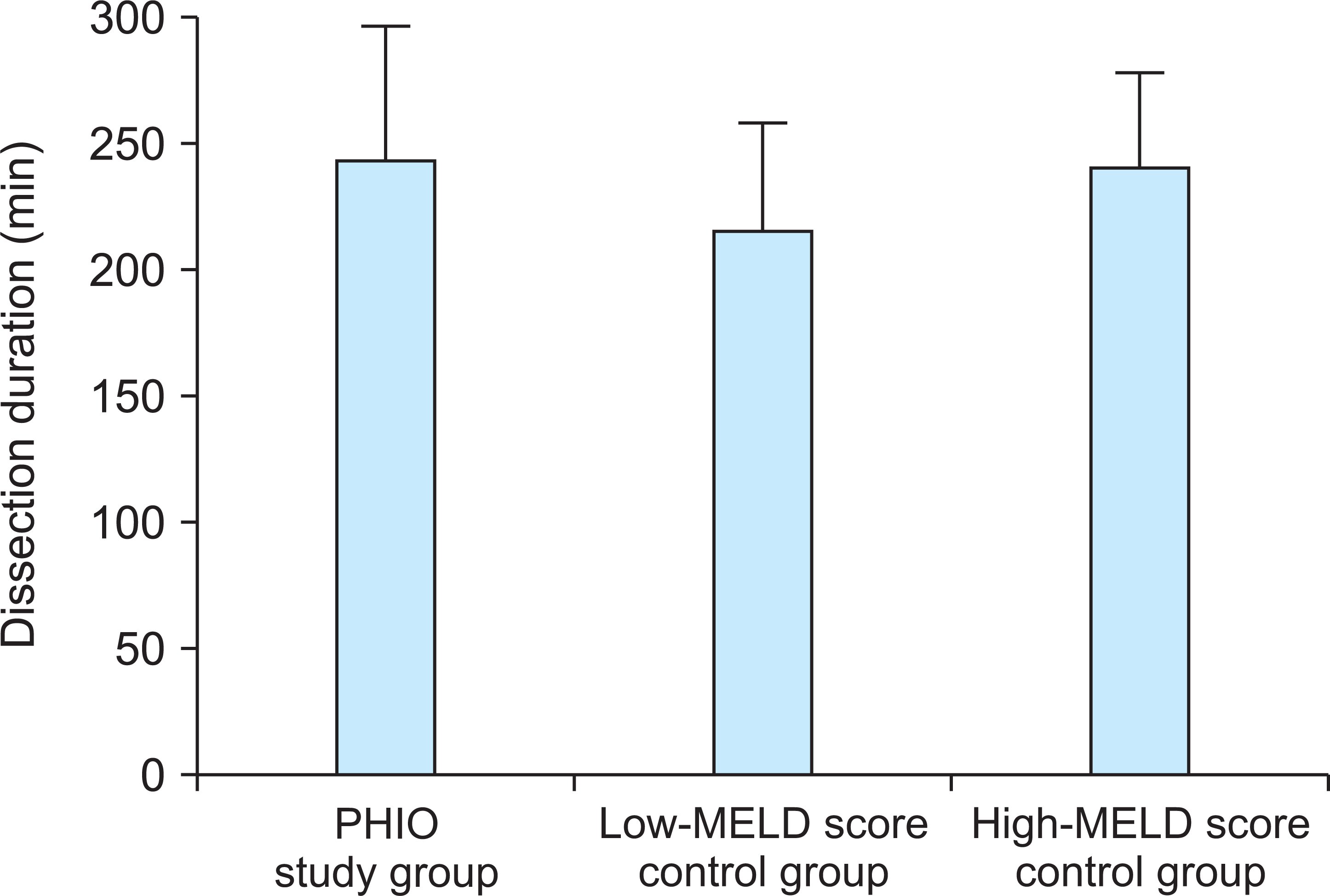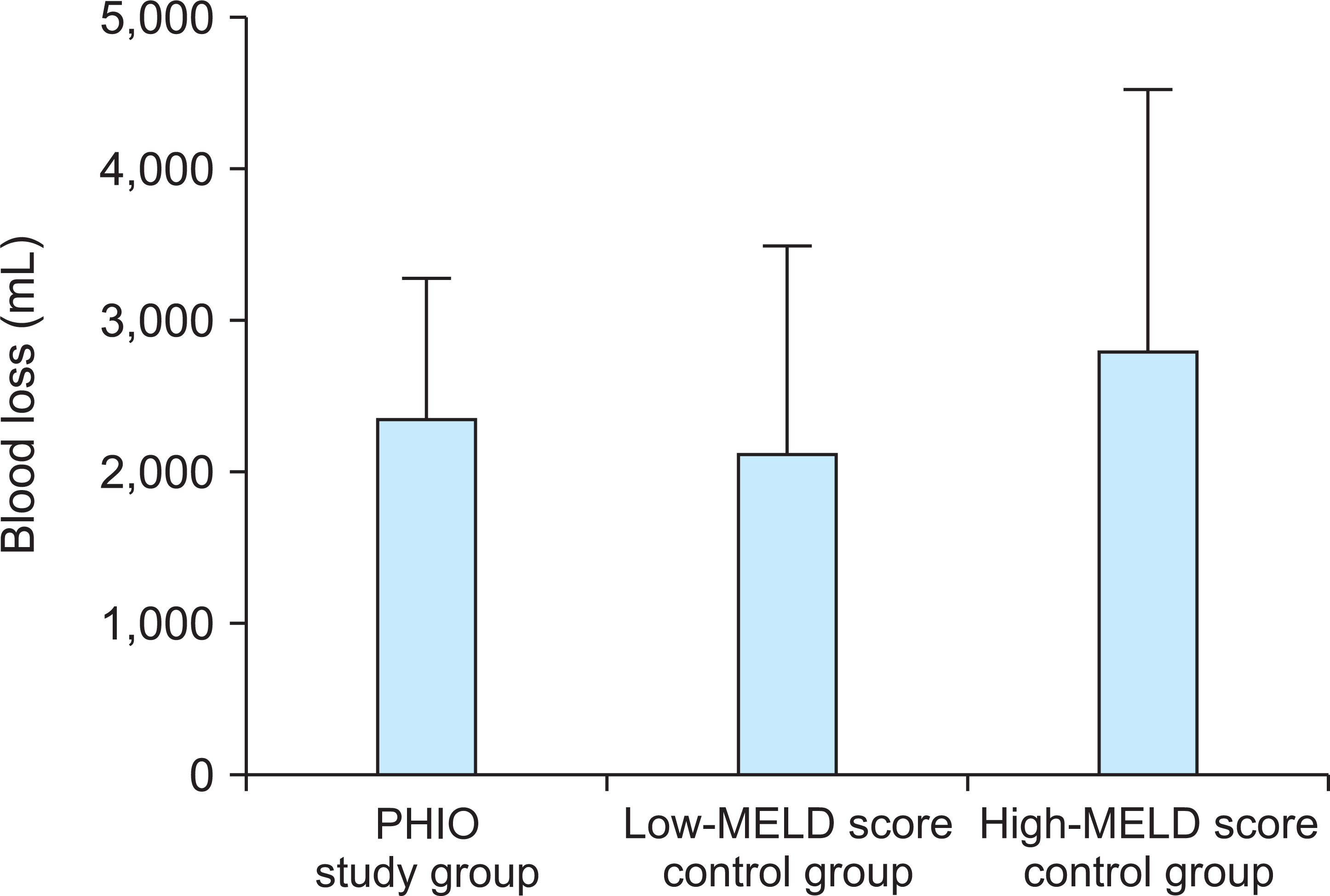Hwang S., Lee SG., Lee YJ., Sung KB., Park KM., Kim KH, et al. 2006. Lessons learned from 1,000 living donor liver transplantations in a single center: how to make living donations safe. Liver Transpl. 12:920–7. DOI:
10.1002/lt.20734. PMID:
16721780.

Hwang S., Lee SG., Moon DB., Ahn CS., Kim KH., Lee YJ, et al. 2007. Salvage living donor liver transplantation after prior liver resection for hepatocellular carcinoma. Liver Transpl. 13:741–6. DOI:
10.1002/lt.21157. PMID:
17457860.

Choi JU., Hwang S., Ahn CS., Moon DB., Ha TY., Kim KH, et al. 2019. Prolonged occlusion of the hepatoduodenal ligament to reduce risk of bleeding and tumor spread during recipient hepatectomy for living donor liver transplantation. Ann Hepatobiliary Pancreat Surg. 23:61–4. DOI:
10.14701/ahbps.2019.23.1.61. PMID:
30863809. PMCID:
PMC6405371.

Lee KF., Wong J., Cheung SY., Chong CC., Hui JW., Leung VY, et al. 2018. Does intermittent pringle maneuver increase postoperative complications after hepatectomy for hepatocellular carcinoma? A randomized controlled trial. World J Surg. 42:3302–11. DOI:
10.1007/s00268-018-4637-3. PMID:
29696328.

Yoon JU., Byeon GJ., Park JY., Yoon SH., Ryu JH., Ri HS. 2018. Bloodless living donor liver transplantation: risk factors, outcomes, and diagnostic predictors. Medicine (Baltimore). 97:e13581. DOI:
10.1097/MD.0000000000013581. PMID:
30558025. PMCID:
PMC6320073.
Huang CJ., Cheng KW., Chen CL., Wu SC., Shih TH., Yang SC, et al. 2013. Predictive factors for pediatric patients requiring massive blood transfusion during living donor liver transplantation. Ann Transplant. 18:443–7. DOI:
10.12659/AOT.889293. PMID:
23999839.

Pustavoitau A., Lesley M., Ariyo P., Latif A., Villamayor AJ., Frank SM, et al. 2017. Predictive modeling of massive transfusion requirements during liver transplantation and its potential to reduce utilization of blood bank resources. Anesth Analg. 124:1644–52. DOI:
10.1213/ANE.0000000000001994. PMID:
28426586.

Steib A., Freys G., Lehmann C., Meyer C., Mahoudeau G. 2001. Intraoperative blood losses and transfusion requirements during adult liver transplantation remain difficult to predict. Can J Anaesth. 48:1075–9. DOI:
10.1007/BF03020372. PMID:
11744582.

Cacciarelli TV., Keeffe EB., Moore DH., Burns W., Chuljian P., Busque S, et al. 1996. Primary liver transplantation without transfusion of red blood cells. Surgery. 120:698–704. DOI:
10.1016/S0039-6060(96)80019-5. PMID:
8862380.

Massicotte L., Beaulieu D., Roy JD., Marleau D., Vandenbroucke F., Dagenais M, et al. 2009. MELD score and blood product requirements during liver transplantation: no link. Transplantation. 87:1689–94. DOI:
10.1097/TP.0b013e3181a5e5f1. PMID:
19502961.

Pinto MA., Chedid MF., Sekine L., Schmidt AP., Capra RP., Prediger C, et al. 2019. Intraoperative cell salvage with autologous transfusion in liver transplantation. World J Gastrointest Surg. 11:11–8. DOI:
10.4240/wjgs.v11.i1.11. PMID:
30705735. PMCID:
PMC6354069.

Park YK., Kim BW., Wang HJ., Xu W. 2012. Usefulness of the Pinch-Burn-Cut (PBC) technique for recipient hepatectomy in liver transplantation. Korean J Hepatobiliary Pancreat Surg. 16:13–6. DOI:
10.14701/kjhbps.2012.16.1.13. PMID:
26388900. PMCID:
PMC4575015.

Lee KW., Joh JW., Kim SJ., Choi SH., Heo JS., Lee HH, et al. 2004. High hilar dissection: new technique to reduce biliary complication in living donor liver transplantation. Liver Transpl. 10:1158–62. DOI:
10.1002/lt.20230. PMID:
15350008.

Scatton O., Brustia R., Belli G., Pekolj J., Wakabayashi G., Gayet B. 2015. What kind of energy devices should be used for laparoscopic liver resection? Recommendations from a systematic review. J Hepatobiliary Pancreat Sci. 22:327–34. DOI:
10.1002/jhbp.213. PMID:
25624116.

Verran DJ., Gurkan A., Chui AK., Dilworth P., Koorey D., McCaughan G, et al. 2000. Pancreatitis in adult orthotopic liver allograft recipients: risk factors and outcome. Liver Transpl. 6:362–6. DOI:
10.1053/lv.2000.5203. PMID:
10827240.

Krokos NV., Karavias D., Tzakis A., Tepetes K., Ramos E., Todo S, et al. 1995. Acute pancreatitis after liver transplantation: incidence and contributing factors. Transpl Int. 8:1–7. DOI:
10.1111/j.1432-2277.1995.tb01698.x. PMID:
7534081. PMCID:
PMC2950630.

Li H., Yang Z., Tian F. 2019. Clinical characteristics and risk factors for sinistral portal hypertension associated with moderate and severe acute pancreatitis: a seven-year single-center retrospective study. Med Sci Monit. 25:5969–76. DOI:
10.12659/MSM.916192. PMID:
31400275. PMCID:
PMC6699198.






 PDF
PDF Citation
Citation Print
Print





 XML Download
XML Download